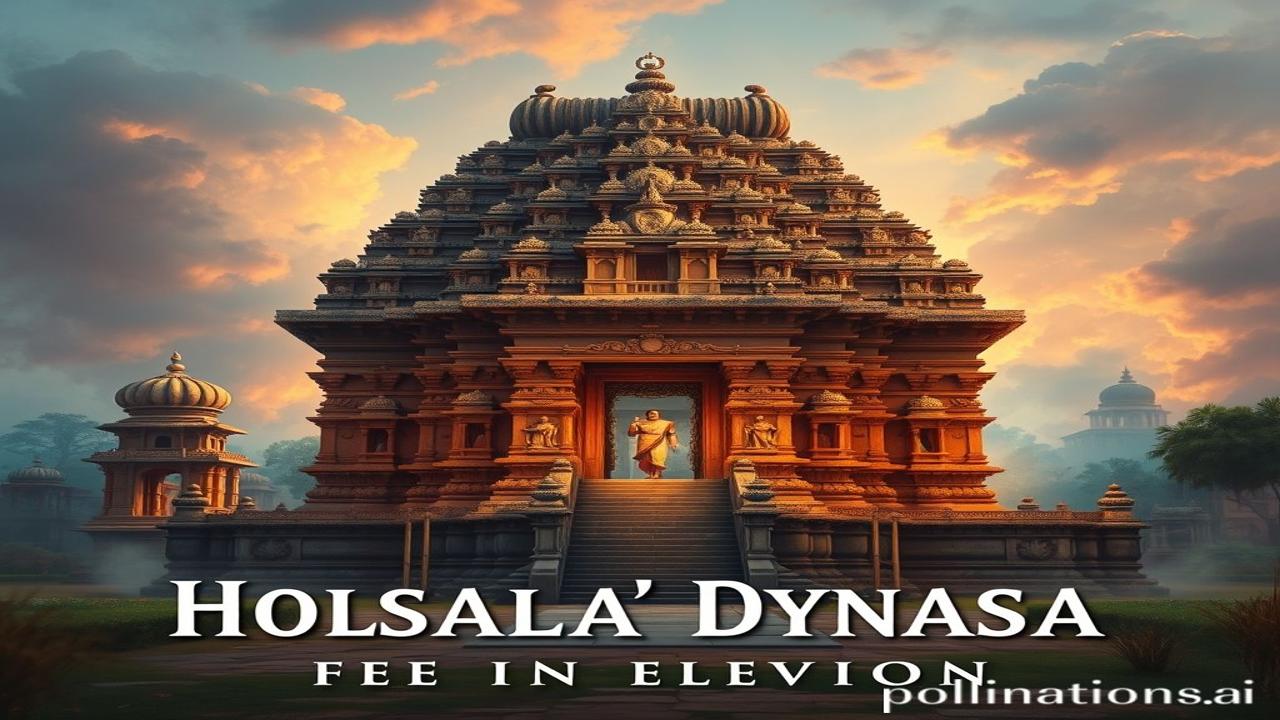Waqt Ke Panno Mein Chhupi: Hoysala Kalakari Ki Kahani
Kabhi aankhein band karke socho… Kya mahsus hota hai jab tum patharon mein jeevan dekhte ho? Imagine, around 1000 years ago, in what is now Karnataka, a dynasty rose that didn’t just build temples; they sculpted poetry in stone. Yeh hai Hoysala vansh ki kahani, a tale of intricate art, innovative architecture, and a deep love for their land.
Hoysala: Ek Historical Jhalak
So, Hoysala dynasty kya hai aur kab aayi? The Hoysalas ruled South India, particularly Karnataka, from the 11th to the 14th centuries. They were initially feudatories of the Western Chalukyas, but they carved out their own independent kingdom. Their capital was initially Belur, later shifting to Halebidu (also known as Dwarasamudra). They are important because they gave us some of the most stunning examples of Vesara architecture – a unique blend of Dravidian and Nagara styles. Think of it as a delicious fusion dish, but in stone!
Why should we care? Because their temples are not just places of worship; they are museums of art, history, and culture. They show us the sophistication of Indian craftsmanship and the rich tapestry of stories they wanted to tell. Believe it or not, the Hoysalas weren’t big on aggressive expansion, they were more interested in building and patronizing art. Think of them as the artistic patrons of their time, almost like the Medicis of India, but with more incense and fewer conspiracies (maybe!).
Zameeni Sach: Hoysala Jeevan
Imagine walking through Halebidu market. The air is thick with the scent of sandalwood, jasmine, and spices. You see artisans meticulously carving deities on small pieces of ivory. Farmers are selling their produce, their faces etched with the stories of sun and soil. Ma Rukmini ne aaj naye kapde pehne, kyunki mandir mein utsav tha. She walks with other women, singing devotional songs that echo through the streets.
Rulers like Vishnuvardhana and Veera Ballala II were not just kings; they were patrons of art and learning. Vishnuvardhana’s queen, Shantala Devi, a Jain by birth, was equally supportive of temple construction, reflecting the religious harmony of the time. Imagine a king and queen discussing the details of a temple sculpture, the curve of a goddess’s hand, the placement of each tiny gem. Their dialogue could have been something like this:
“Maharaj,” Shantala might have said, “Kya hum Chennakeshava mandir mein ek naya stambh jodne wale hain?”
Vishnuvardhana replies, “Avashya, Rani. Yeh stambh hamare rajya ki shakti aur kala ka pratik hoga.”
These temples weren’t built overnight; they were decades in the making, with generations of artisans pouring their hearts and souls into every intricate detail.
Dharohar Aur Pehchan: Hoysala Legacy Today
Today, the Hoysala temples continue to inspire awe and wonder. You can see their influence in modern architecture and art. Their dedication to intricate detailing and storytelling through sculpture is still a source of inspiration for artists and architects. The belief in Shakti, कला, and धरोहर resonates even now. When you visit these temples, you’re not just seeing old stones; you’re connecting with a living tradition. In a way, they are a reminder of what “Bharatiyata” (Indianness) truly means – a celebration of art, culture, and spirituality.
Majedar Tathya: Hoysala Secrets
Log samajhte hain ki Hoysala mandir sirf Hindu devtao ke liye the, lekin asli sach yeh hai ki they often incorporated Jain and even Buddhist elements, reflecting their open-minded approach to religion. Another cool fact? Hoysala temples are known for their star-shaped (stellate) platforms, a complex design that allows for more intricate sculptures and creates stunning visual effects. Think of it as the ultimate architectural flex!
Drishya Aur Bhavna: A Sensory Experience
Close your eyes again. Feel the smooth, cool stone of the Chennakeshava Temple beneath your fingers. The air smells of sandalwood incense, mingled with the sweet fragrance of jasmine garlands offered to the deities. The sounds of chanting and temple bells echo in your ears, creating a symphony of devotion. You see the sunlight dancing on the walls, illuminating the intricate carvings that tell stories of gods, goddesses, and everyday life. You can almost hear the laughter and whispers of the people who walked these paths centuries ago.
Antim Vichar: A Timeless Echo
“Shilpa kala mein chhupa hai jeevan ka rahasya, har patthar mein ek kahani.” The Hoysala dynasty may be long gone, but their legacy lives on in the stones they left behind. These temples are not just monuments; they are echoes of a vibrant past, reminders of the power of art, devotion, and the enduring spirit of India. Go, explore, and let the stones speak to you. You might just discover something profound about yourself and our shared history.
